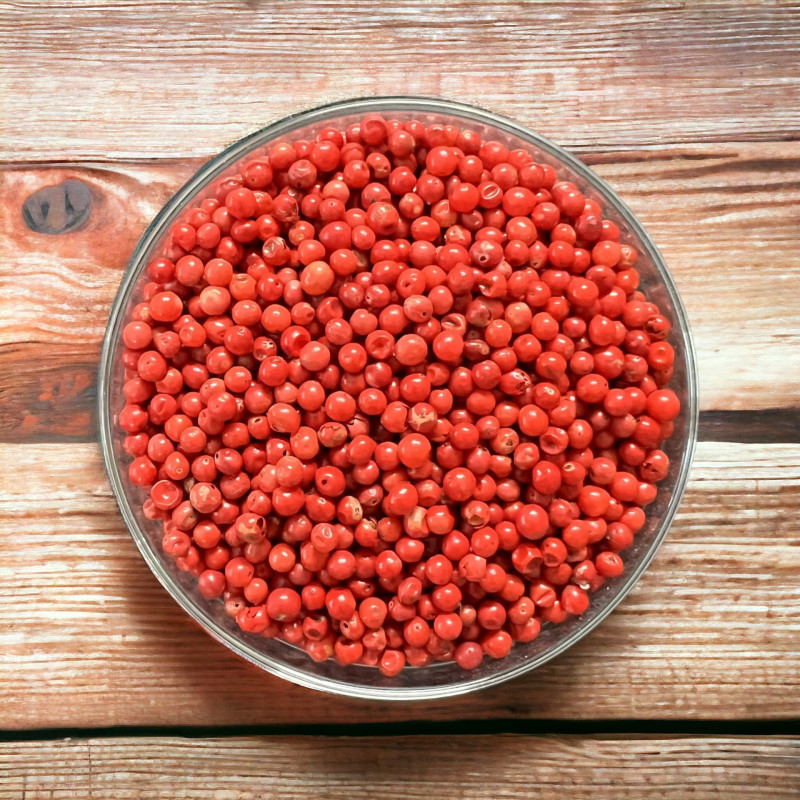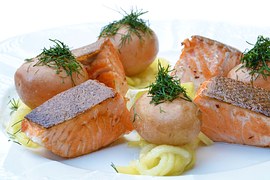
Reference: poivre5baiesE



First-quality, hand-sorted! Its flavor is very mild, almost sweet.
Primarily used to accompany fish in all its forms, it also pairs wonderfully with cheeses and is an essential ingredient in the "5 peppercorn blend."
 Delivery
Delivery
Mondial Relay
 Returns
Returns
See conditions
 Payments
Payments
100% secure

Uses in Cooking and Beyond:
Often considered a variety of pepper, pink peppercorn is actually not related to this spice at all! On the palate, it feels very "hollow," doesn’t resist, and develops a very mild, sweet, and slightly warm taste. When used alone (without adding other peppercorns), it’s not ground, and that’s convenient because it’s quite oily and tends to clog the grinders! Moreover, when left whole, these beautiful bright pink and plump berries magically adorn dishes!
Pink peppercorn pairs very well with mixed salads, but especially with fish dishes, whether it’s raw fish in carpaccio, smoked fish, baked in foil, terrines, sauces, or salads. It’s inseparable from smoked salmon (together with dill leaves) and also works wonders with goat cheeses, especially when marinated in oil. Its subtly peppery flavor also perfectly complements some sweet preparations, like fruits (strawberries, pears, etc.) poached in syrup infused with pink peppercorns.
Pink peppercorn is part of the "5 pepper mix," along with white, black, and green peppercorns and allspice berries.
It is sometimes also found preserved in brine, in a can.
When consumed in excessive amounts, pink peppercorn is considered a gastric irritant.
It is also used in the composition of certain perfumes.
Who am I?
Origin: Madagascar
Scientific name: Shinus molle and Shinus terebenthifolius
Other names: Pink pepper, Reunion pepper, red pepper, false pepper, Brazilian pepper
One of the nicknames of pink pepper, Reunion pepper, comes from the island of Reunion, where the tree was introduced by colonists and has spread into the coastal thickets of the island.
It is the fruit of two large trees, Shinus molle and Shinus therebinthifolius, which can grow over 10 meters tall, belonging to the Anacardiaceae family (like mango and sumac), often called "false pepper trees" and close relatives of the pistachio tree. The tree itself secretes a fragrant resin, which has earned it the name "incense" at times. Both trees are native to South America, though one originates from Peru (molle) and the other from southeastern Brazil, Argentina, and Paraguay (threbinthifolius).
These trees thrive in warm regions with an annual temperature between 13°C and 25°C. The leaves, finely cut, are also very fragrant when crushed between the fingers. The small, cream-colored flowers, arranged in hanging clusters, develop from February to April. They are nectar-producing and allow for the production of delicately scented honey. The berries also hang in clusters, and when ripe, their outer shell turns a bright pink color. They are then picked in small clusters and dried in the shade for a few days. Then begins the sorting, which is long, involves much loss, and sometimes ends with tweezers! This is why the price of these berries is always quite high!
The natives of the regions where the tree originates rarely consume these berries and are surprised by our growing interest in them!
Most of the production comes from South America (Peru is a major producer), Florida, New Caledonia, and Madagascar.
Data sheet
 Anne Marie P.
Anne Marie P.
Parfait

 Anne Marie P.
Anne Marie P.
Parfait

Reference: poivre5baiesE
Reference: poivreEbiosaotome
Reference: Kubebe
Reference: poivreBEviet
Reference: SriLankaBlanc
Reference: pimentjamaiqueE
Reference: 6L5609802
Reference: poivreNEMalabar
Reference: poivresichuanV
Reference: Graineparadis
Reference: poivrenoirconc
Reference: 2M6273801
Reference: 208029701
Reference: 6N745801
Reference: poivrevoatsE
Reference: 2N70996502


First-quality, hand-sorted! Its flavor is very mild, almost sweet.
Primarily used to accompany fish in all its forms, it also pairs wonderfully with cheeses and is an essential ingredient in the "5 peppercorn blend."